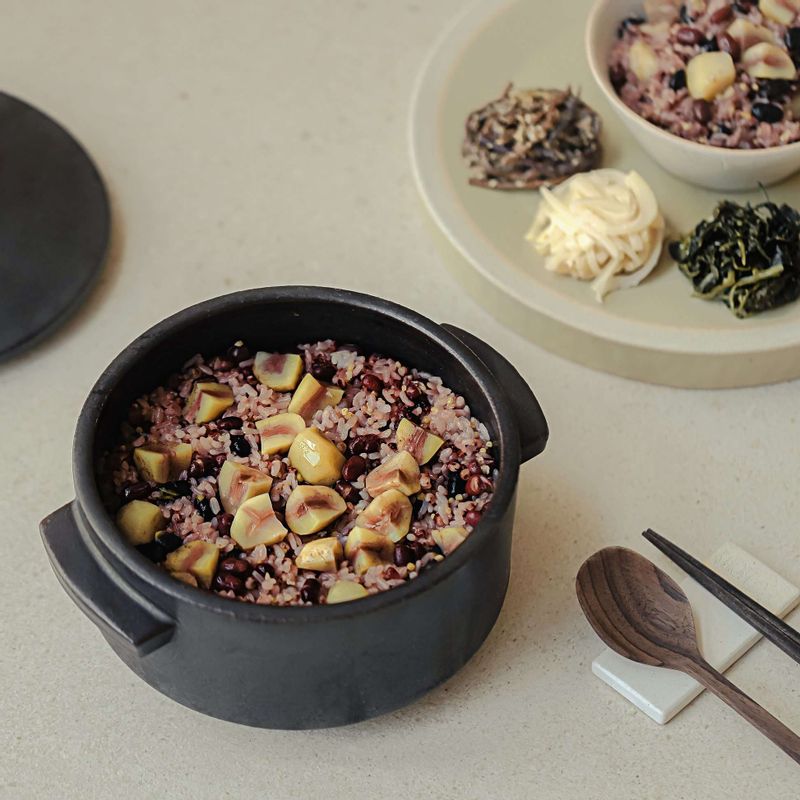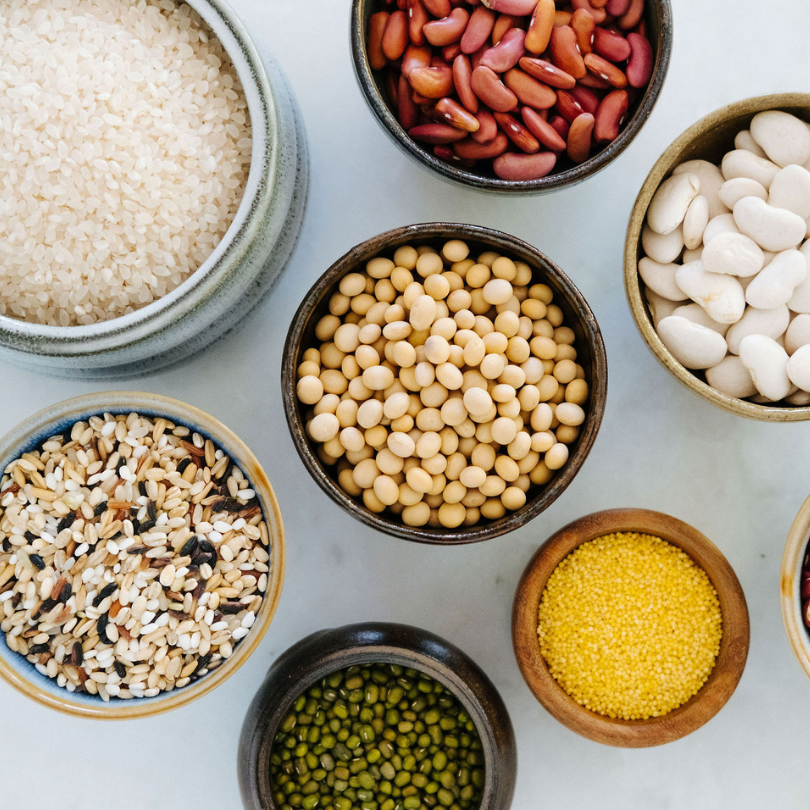Introduction
Have you ever wondered what lies behind the staple dish that graces every Korean dining table? Beyond being just a part of the meal, Korean mixed grain rice is a tapestry of flavors, history, and health woven into each grain. In this blog, we're going to delve into the world of this extraordinary staple, uncovering its rich heritage, diverse health benefits, and why it's more than just food – it's a culinary revelation. Join us on this flavorful journey to discover why Korean mixed grain rice is not just a meal, but a story in every bite.
Why You Should Read This Blog:
Discover the Culture: Korean mixed grain rice is not just food; it's a cultural treasure. Learn how it's deeply embedded in Korean traditions and daily life.
Health Benefits Galore: Ever heard of superfoods? Korean mixed grains are on this list! We'll explore their nutritional power and why they should be a part of your diet.
Culinary Adventure: Get ready for some mouth-watering recipes and cooking tips that will transform the way you see and taste rice.
Want to Know More? Visit Our Store
If this blog has tickled your taste buds and you're craving to learn more about Korean mixed grain rice, we've got you covered. Visit our store where you'll find a variety of mixed grains, recipes, and maybe even a new favorite dish. Dive deeper into the world of Korean cuisine with us!
Table of Content
The Cultural Significance of Rice in Korea
In Korean culture, rice, or 'bap', holds a profound significance that transcends its basic role as a food item. It is deeply embedded in daily language and social interactions, symbolizing a range of emotions and states of being. From greetings that inquire about one's last meal to expressions that use food as metaphors for various life situations, rice is an intrinsic part of Korean life. Its importance reflects in sayings about relationships, gratitude, and even in moments of frustration or anger. This cultural context elevates rice from a mere dietary staple to a symbol of communal bond, wellbeing, and emotional expression in Korean society.

Korean mixed rice, with its symphony of grains, symbolizes not just a meal but a rich tapestry of culture and history.
Tracing the Historical Journey of Korean Mixed Grain Rice
The history of Korean mixed grain rice is a fascinating journey through time. Historically, as Korea progressed through various eras – from tribal societies to the Joseon Dynasty – the cultivation and use of diverse grains also evolved. Initially, grains like millet, barley, and beans were dominant. However, with the advancement of rice farming, other grains like sorghum and red beans gained prominence. By the Goryeo Dynasty, the focus shifted more towards rice farming, reducing the cultivation of other grains. Yet, by the mid-Joseon Dynasty, a variety of grains, including peas and gummaek, began to be widely used. This period marked the emergence of mixed grains as a significant part of the Korean diet, showcasing the adaptability and richness of traditional Korean agriculture and culinary practices.
Key Grains in Korean Mixed Rice

Korean mixed grains offer a wide array of health benefits. For instance, oats are recognized for their high beta-glucan content, beneficial for heart health and cholesterol management. Similarly, other grains like Yulmu and Sorghum offer unique nutritional profiles, contributing to overall well-being and disease prevention. The inclusion of these grains in traditional and modern Korean cuisine demonstrates their versatility and enduring relevance in a health-conscious world.
As superfoods, these grains are more than just food; they are a testament to the evolving nature of dietary habits focused on wellness and longevity. Korean mixed grains embody this shift, offering a blend of tradition, nutrition, and taste.
Oats : Elevated from humble beginnings, oats are now recognized for their rich beta-glucan content, promoting heart health and lowering cholesterol.
Yulmu (Coix Seed) : Traditionally consumed in savory teas, Yulmu is celebrated for its nutritional benefits, including potential anti-inflammatory effects.
Sorghum : This vibrant red grain is not just visually appealing but also rich in antioxidants, playing a traditional role in Korean festivals and symbolizing good luck.
Barley : Once considered a secondary choice to rice, barley is now appreciated for its high fiber content and benefits to digestive health.
Perilla Seeds : A powerhouse of omega-3 fatty acids, these seeds are a testament to the growing awareness of the importance of good fats in our diet.
Millets : Small but mighty, millets pack a punch with vitamins, minerals, and fiber, adding a crunchy texture to the rice blend.
Lentils : A relatively new addition to the Korean palette, lentils bring protein and fiber, making them a fantastic plant-based ingredient.
Rom America's Advocacy for Korean Mixed Grain Rice
Jeongwol Daeboreum, a significant festival in Korea, celebrates the first full moon of the lunar new year, usually falling on the 15th day of the first lunar month. On this day, a tradition is observed where people crack nuts with their teeth, believed to prevent boils for the year. The highlight is enjoying ogokbap, a nutritious five-grain rice dish.
Ogokbap, which symbolizes good fortune and health, includes various grains like glutinous rice, black beans, and millet. This tradition dates back to the Silla Kingdomand reflects Korea's deep-rooted agricultural heritage. It's a time of sharing meals and making wishes for the new year.

How to make Ogokbap
1 hour (including soaking time)
30-40
4-6
Main Course
Korean
Rom America: Your Gateway to the World of Asian Superfoods
Ogokbap is typically prepared as a part of the Jeongwol Daeboreum celebration, the Great Full Moon Festival, and incorporates a variety of grains, each adding unique flavor and texture. This dish is not just nutritious but also deeply rooted in Korean tradition, symbolizing health, prosperity, and communal harmony.
To make Ogokbap, you'll need glutinous rice, black beans, various millets, and other grains. The key is to soak some of these grains in advance and cook them carefully to achieve the perfect texture. The final dish is usually served warm and can be paired with side dishes like kimchi or seasoned vegetables for a complete meal.
Note: Specific ratios of grains and detailed steps can vary based on personal preferences or regional variations, so feel free to adjust the recipe to suit your taste.
Rom America has been a pioneer in bringing diverse Asian grains to the United States since 1988, gaining widespread appreciation for their efforts. Specializing in mixed grains, they offer their products in conveniently sized packages suitable for easy consumption. Each of these mixed grain products is a carefully curated blend of various grains, tailored to provide a nutritious and flavorful experience. For detailed information about the specific grains included in each product, please visit [Rom America](https://romamerica.com)'s website.










